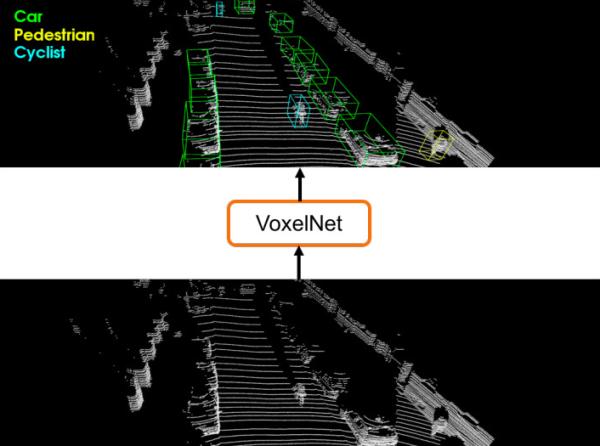Original Title: New Results from Apple's Automated Driving Research: Transforming Sensor Data into 3D Maps
Recently, Apple has published a new artificial intelligence paper that outlines an innovative approach to addressing the limitations of LIDAR (Light Detection and Ranging) sensors in self-driving technology. The paper introduces a system called VoxelNet, which is designed to convert raw sensor data into detailed 3D maps, significantly improving the perception capabilities of autonomous vehicles.
VoxelNet not only creates 3D representations of the environment but also identifies objects such as cars, bicycles, and pedestrians. This helps make autonomous driving safer by enabling the system to better understand its surroundings.
According to a report by The Verge on November 22, LIDAR sensors are often referred to as the "eyes" of autonomous systems. They emit laser light to map the surrounding area in three dimensions, providing more depth information than traditional cameras. However, one major drawback is that LIDAR can only create small, localized maps. If something blocks the laser, it can't see beyond that point, which poses a challenge for safety-critical applications like self-driving cars.
To overcome this limitation, engineers have traditionally used multiple independent systems to break down the LIDAR data into manageable sections and identify what's in each part. Apple’s VoxelNet integrates all these steps into a single neural network, making the process more efficient and accurate. According to the paper, VoxelNet outperforms many existing systems, offering a competitive edge in the field of autonomous driving.

In the 3D maps generated by VoxelNet, different objects are clearly identified. For example, a pedestrian is marked with a yellow box, a bicycle with a blue box, and a car with a green box. This level of detail enhances the system's ability to navigate complex environments safely.
Beyond self-driving cars, VoxelNet has potential applications in various AI-powered devices, including home assistant robots, augmented reality (AR), and virtual reality (VR) systems. Its versatility makes it a valuable tool for future smart technologies.
Apple’s interest in autonomous systems dates back to 2016 when it first launched the Titan project, aiming to develop a self-driving car. However, the company later shifted its focus, deciding not to build a full-fledged vehicle but instead to develop autonomous systems that could be integrated into partner cars. In June 2017, CEO Tim Cook confirmed this strategy during an interview with Bloomberg, stating that Apple was working on an autonomous system.
Cook emphasized the importance of the project, saying, “We see the autonomous system as the mother of all artificial intelligence applications. It may be one of the most difficult AI projects we are working on.†He added, “It’s a crucial core technology for our future.â€
Despite Apple’s progress, some experts remain skeptical about whether VoxelNet represents a major breakthrough. Roland Meertens, an automated vision systems engineer from the Netherlands, pointed out that other companies have also developed alternative solutions. For instance, Tesla does not use LIDAR at all, yet its vehicles perform well in lane-keeping and navigation tasks. This suggests that there are multiple paths to achieving reliable autonomous driving, and Apple’s approach is just one of many possibilities.
Bang Beach 38000 Puff Hot Sale Big Puff Vape,38000 Puff Vape Bang Beach,Bang Beach 38000 Puff Vape Juice Salt Nic
Shenzhen Essenvape Technology Co., Ltd. , https://www.essenvape.com
